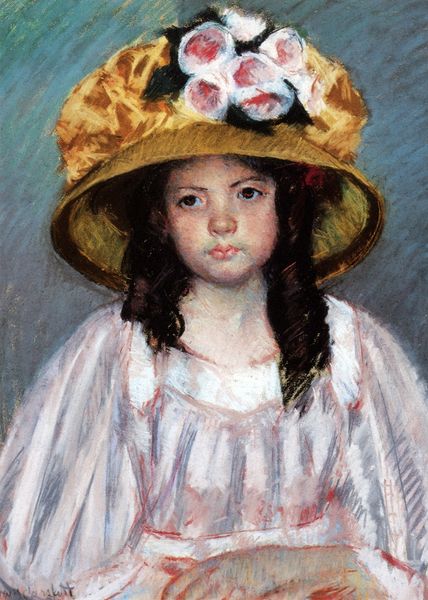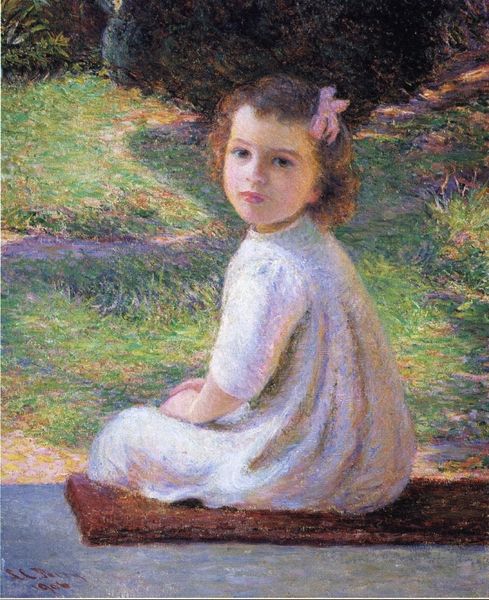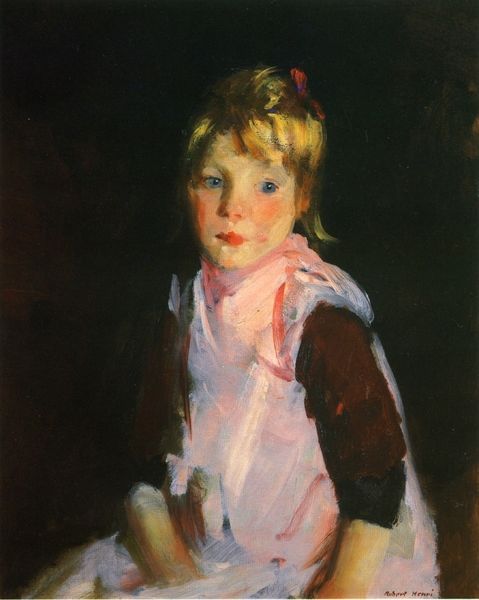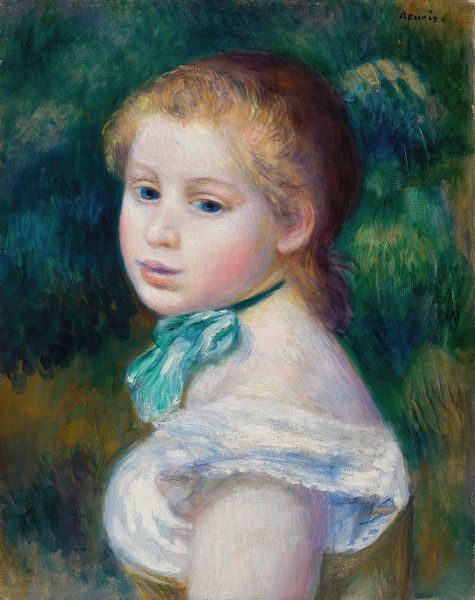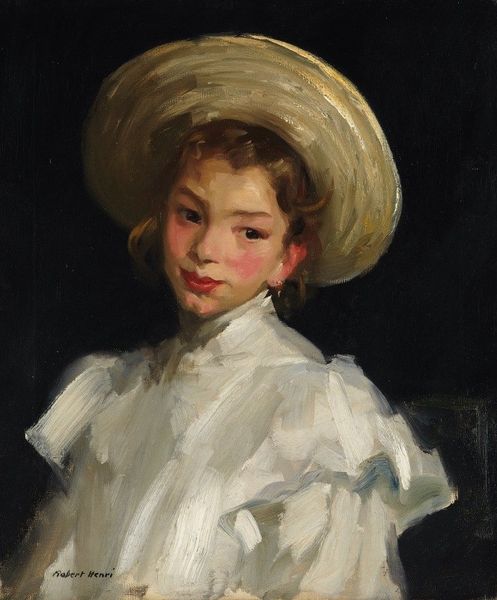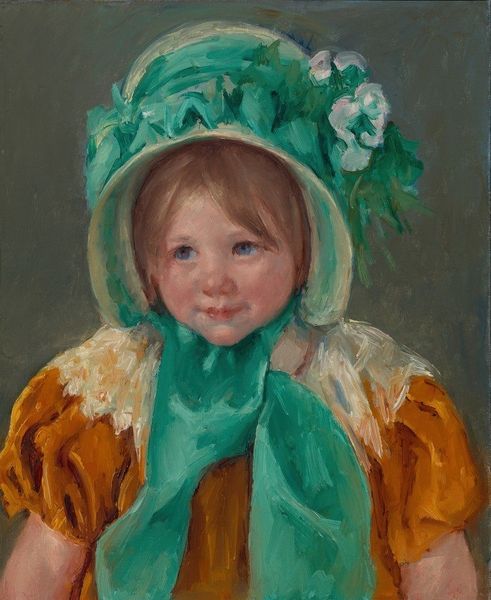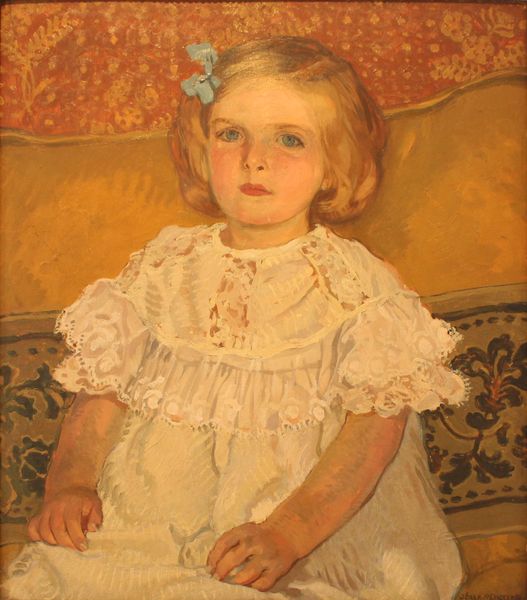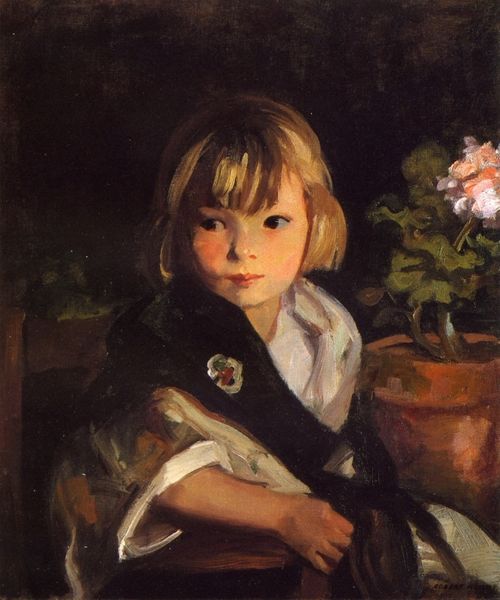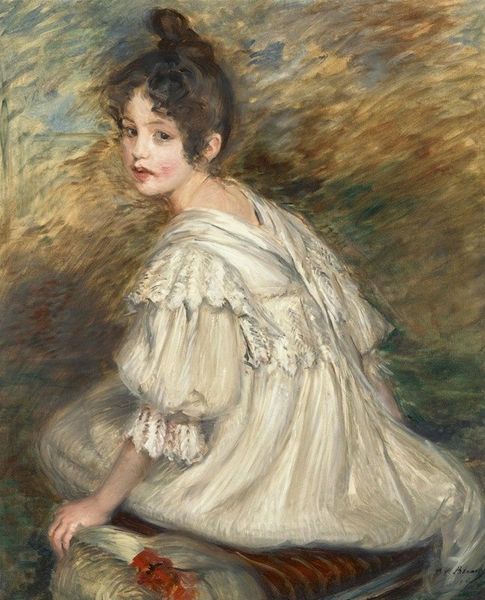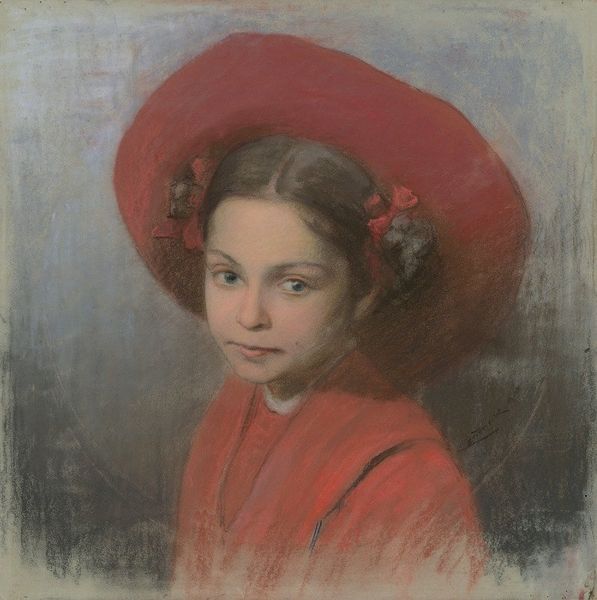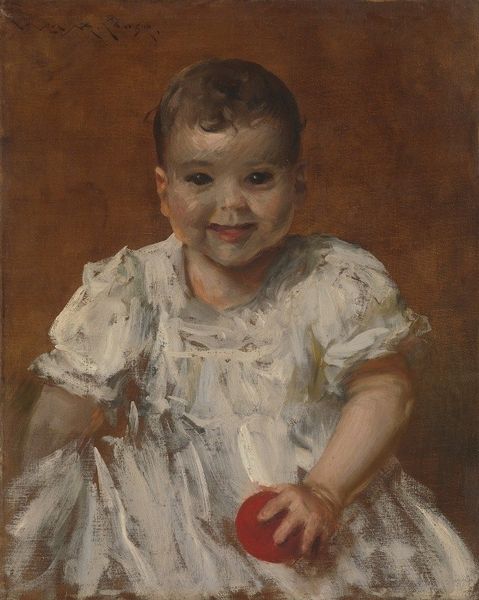
Copyright: Public domain
Curator: Mary Cassatt painted "Spring Margot Standing in a Garden" around 1900. Cassatt, an American artist, was deeply involved in the Impressionist movement in France. She crafted this portrait using oil on canvas. Editor: The first thing that strikes me is its delicacy, especially the light filtering through the trees. There's an ethereal quality to it, despite the child being rendered in such a solid, tangible manner. It seems to epitomize fleeting childhood innocence. Curator: Indeed. The work exemplifies Cassatt's focus on the everyday lives of women and children. Here, we see a young girl, presumably Margot, standing in what seems to be a family garden. The garden setting suggests ideas about the natural world, growth, and caretaking within domestic confines, but painted en plein air. How does the depiction contrast to staged photographs of children? Editor: Interesting. The hat, with its large brim and flower, seems a cultural marker, framing Margot's face in such a particular way. Hats were certainly de rigueur! Yet, there’s an innocence disrupted, or rather augmented by, its deliberate positioning, hinting at the adult world she’s soon to inherit, framed by childhood memories. I also notice what seems like a rudimentary cross. How does faith interplay with the portraiture here? Curator: Note also the clothing - those modest dresses were assembled from multiple different layers, materials, linings, trim! One also sees the marks of the impressionist moment. Cassatt worked often with flattened picture planes which had originated from the influence of Japonisme. So we can also analyze her prints on these same issues... How many proofs were needed and what was the labour that went into such an etching to get that painterly affect? The Impressionist were often exploring the same methods over and over for various scenes. Editor: That connection to the traditions of childhood portraits in Europe is compelling too, when you notice how she captures Margot with so much careful consideration for symbolic garments. She seems at once burdened and sheltered by that big hat, yet stands with gentle self-possession in her home’s setting of care. It strikes a potent chord, a symbol of childhood suspended between two worlds. Curator: Precisely, this offers such nuanced commentary through its focus on materiality and labour! And, as we observe "Spring Margot," we engage with a canvas rich in both social context and material consequence. Editor: Yes, looking closely at it through an iconographic lens certainly opens layers of interpretation. It’s a deceptively simple scene with much more lurking below the surface.
Comments
No comments
Be the first to comment and join the conversation on the ultimate creative platform.
